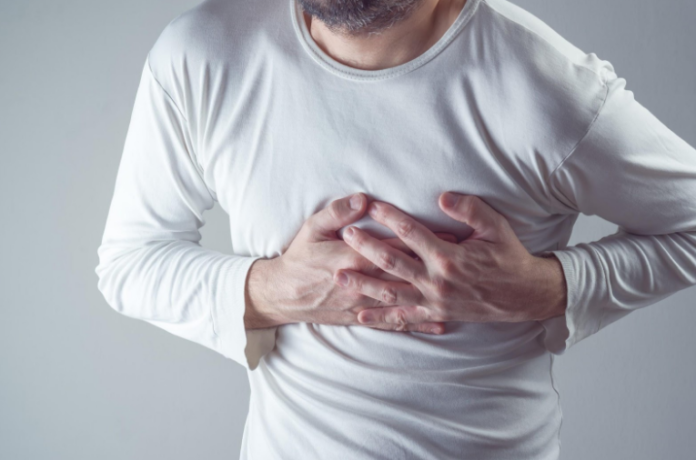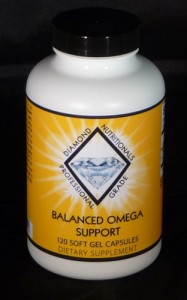On TV, characters having heart attacks often clutch their chests dramatically. They may collapse to the ground and even declare to onlookers that they’re having a heart attack.
In real life, a heart attack may look very different. Chest pain is indeed the most common symptom, but it is just one of many possible symptoms of this life-threatening condition. You may not even know you’re having one.
Now is the time to familiarize yourself with the signs and symptoms of a heart attack. That way, you’ll be ready if a friend or family member — or even you — experiences them in the future.
Remember: The quickest way to get help if you think you’re having a heart attack is to dial 9-1-1. Heart attacks are life threatening and require immediate professional attention.
What Is a Heart Attack?
When one of the arteries, known as coronary arteries that carries blood to your heart becomes blocked, blood can’t carry the oxygen and nutrients that your heart muscle needs to survive.
The most common cause of an artery blockage is a slow buildup of plaque. Plaque is composed of fats, cholesterol, inflammatory cells and proteins. This buildup often occurs over years. In time, part of this plaque buildup may break off and lodge in another part of the artery, causing a more serious blockage.
The condition of plaque buildup that can lead to a heart attack is known as coronary heart disease. Risk factors include smoking, high blood cholesterol (especially LDL cholesterol), high blood pressure, physical inactivity (lack of exercise), being overweight and diabetes. In addition, the risk of heart attack increases as we age, although men tend to have a greater risk at a younger age than do women.
More than a million people in the United States have heart attacks each year, and someone in the US has a heart attack every 43 seconds according to the American Heart Association. But because plaque buildup can’t be easily detected and presents no symptoms early-on, many of those who suffer heart attacks are completely taken by surprise.
Signs and Symptoms
The first thing to remember is that heart attack symptoms can differ for everyone. In addition, their severity can vary depending on the severity of the arterial block.
A heart attack could be signaled by any combination of the following symptoms, especially when those symptoms have no other explanation:
- Chest pain in the center or the left of the chest. This may include sensations of squeezing, pressure, burning or clenching. The chest pain may stop intermittently and return. The type of pain is not always sharp and sudden. It could be more dull, spread out over a wider area, and feel like heartburn.
- Shortness of breath, especially during exertion — but can also occur during rest.
- Dizziness, lightheadedness or weakness.
- Sweating or clammy skin.
- Nausea and/or vomiting.
- Anxiety or a sense of dread.
- Tightness, heaviness or other discomfort in the jaw, arm or arms, neck or chest. Some people also report this discomfort in the back or stomach.
Women May Have Different Symptoms
Heart disease is now the number one killer of women in the US, causing 1 in every 3 deaths each year. The most common symptom of a heart attack for women is chest pain — just as it is for men.
However, women are somewhat more likely to experience other common symptoms, such as pain in the back or the jaw, shortness of breath, and nausea or vomiting. Many women experience no chest pain at all.
This difference is important, because the idea that you can’t be having a heart attack without chest pain, combined with the fact that heart attacks are less likely for women at a certain age, can cause serious and life-threatening delays in women seeking medical attention.
Preventing Coronary Heart Disease
There are a few primary ways to lower your risk factors for coronary heart disease and your odds for a heart attack:
Exercise regularly – For overall cardiovascular health, the American Heart Association recommends adults achieve a minimum of 30 minutes of moderate aerobic activity (such as brisk walking) for 5 days/week (or 25 minutes of vigorous aerobic activity, such as jogging, for 3 days/week), plus moderate to high-intensity muscle-strengthening activity that works the major muscle groups at least 2 days/week. The Centers for Disease Control & Prevention breaks it down even further.
Eat a healthful diet – Your best diet should include organic fruits, vegetables, fiber-rich whole grains (I usually recommend gluten-free), wild-caught fish and other foods high in “good” fats. Restrict saturated and trans fats. Limit your red meat and especially avoid sugary beverages when possible. The Mayo Clinic offers helpful lists of foods that you should choose versus those you should avoid. They also recommend monitoring your portion sizes.
Consider natural supplements – If your daily diet is lacking in any of the critical components above, you can add to it with healthy supplements. Our own Balanced Omega Formula, for example, contains EPA (eicosapentanoic acid) and DHA (docosahexanoic acid) in the proper balance.
Balanced Omega Support is a high-concentration fish oil sourced from waters off the Chilean coast. As the world’s least industrialized coastline, these cold, fresh waters provide the cleanest, most sustainable source of fish in the world. Balanced Omega Support provides 820 mg of eicosapentaenoic acid (EPA)and docosahexaenoic acid (DHA) per soft gel as natural triglycerides, the preferred form with superior absorption. To stabilize the oil, vitamin E (as mixed tocopherols) and rosemary extract are used to ensure maximum purity and freshness. This exclusive fish oil is purified, vacuum distilled, and independently tested to ensure heavy metals, pesticides and polychlorinated biphenyls (PCBs) are removed to undetectable levels. With over 10,000 published studies in the last three decades, EPA and DHA from fish oil are among the most researched natural ingredients available and have a long history of safety and efficacy.
Perhaps the main benefit of Omega-3s is their ability to reduce cardiovascular inflammation. It is this inflammation which helps cholesterol accumulate in, and on, the artery walls. For this, and many reasons, systemic inflammation must be kept to a minimum.
For those who struggle with elevated cholesterol and cardiovascular inflammation, I also frequently use Cholesterol Support Formula. This unique, natural product is rich in Sytrinol® and is formulated to provide natural support for cardiovascular health.
Maintain a healthy weight – Your doctor can help you assess the ideal weight for your body type. Following the above advice about exercise and diet can impact the number on the scale, but work with your doctor to achieve and maintain a healthy weight.
Quit smoking – Explore over-the-counter smoking cessation aids and support groups. Quitting may seem like an impossible challenge, but it could save your life. You should also seek assistance from a medical professional if you need to, and avoid secondhand smoke if possible.
Reduce your stress — Harvard University reports that both acute (sudden) and regular, day-to-day stress can strain your heart. They offer several suggestions for how to manage stress, including meditation and unplugging from technology. You likely know your own best method for unwinding, so remember to put it to use!
Ensure Your Survival
Most heart attacks are treatable as long as they’re caught in time. Those suffering a heart attack generally fare best if they can reach a hospital within 1 hour after the onset of symptoms. So call 9-1-1 immediately if you suspect you’re having heart problems. The longer you wait, the lower your chance of survival.
As with many things in life, it is important to be proactive….especially with your health. By making some lifestyle changes, it is possible greatly reduce the risk of cardiovascular disease!
—
Photo credit: igor stevanovic / bigstock.com









